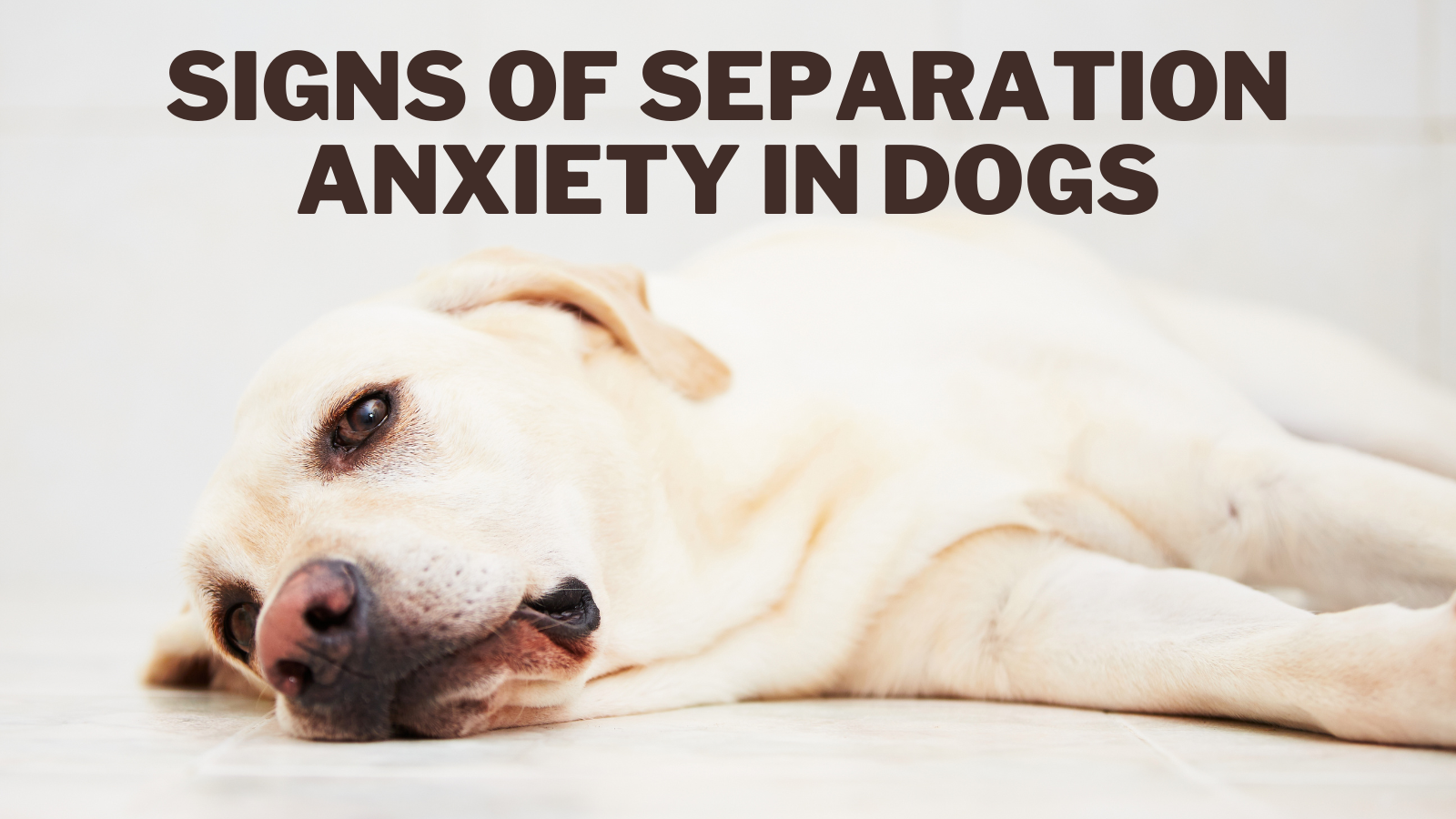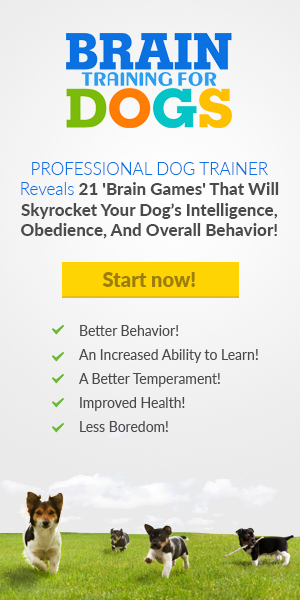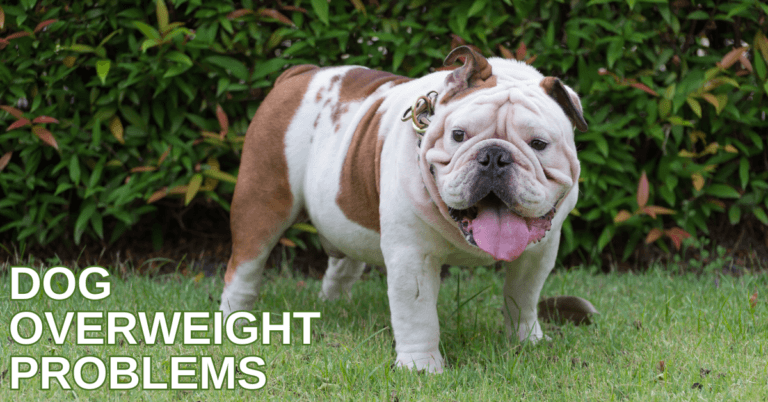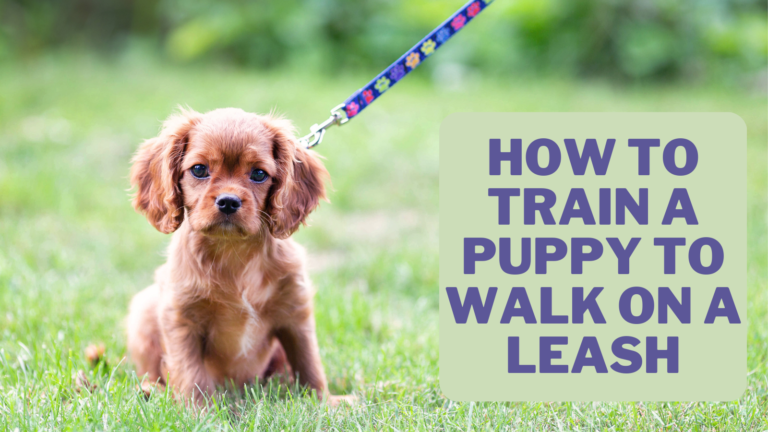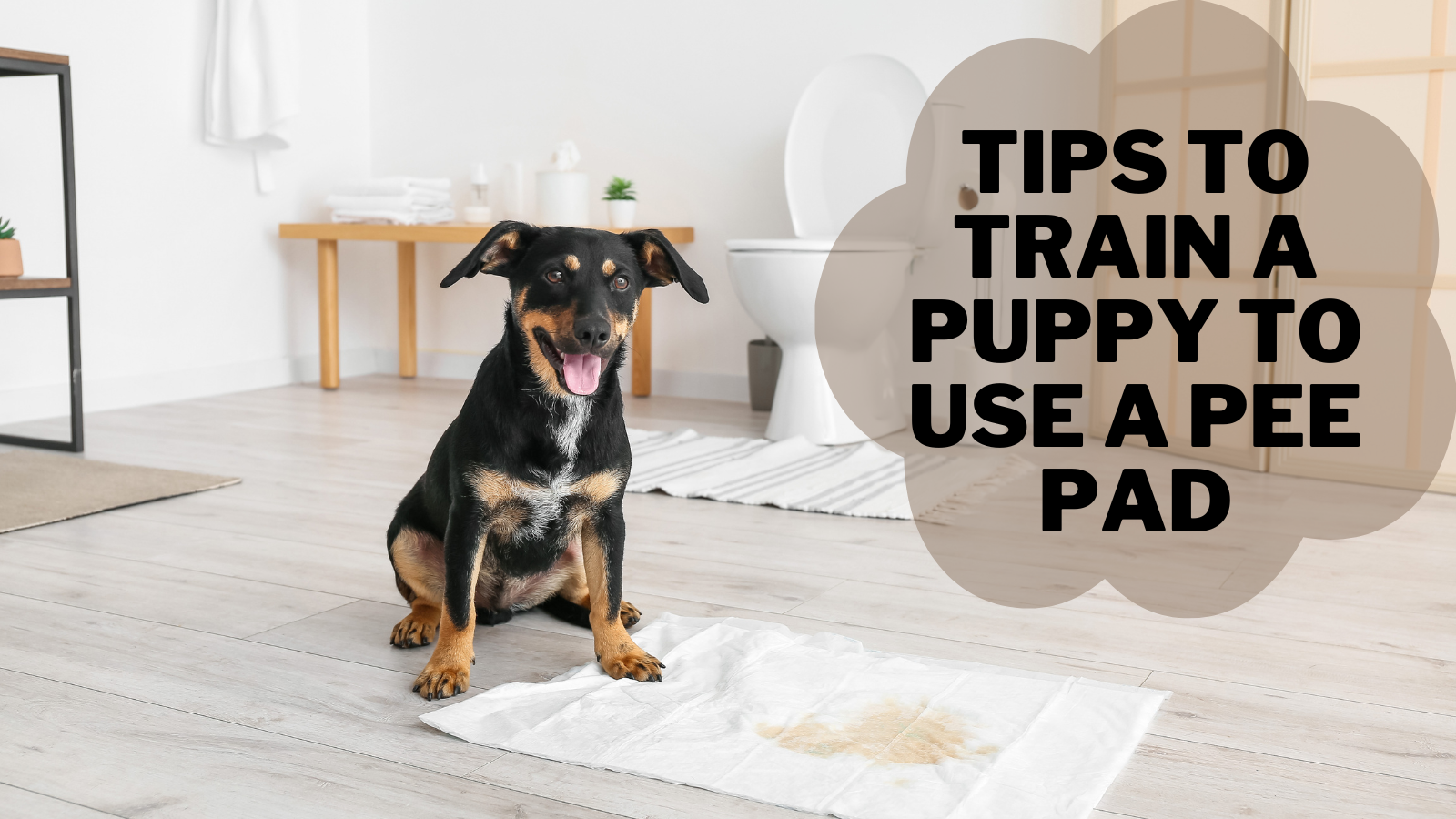Signs Of Separation Anxiety In Dogs
Signs Of Separation Anxiety In Dogs
Dogs are known for their loyalty and affection toward their owners. However, this can also lead to separation anxiety when they are left alone. Separation anxiety in dogs is a common behavioural problem that can cause distress for the dog and the owner.
This blog post will discuss the signs of separation anxiety in dogs and how to manage this issue. By understanding the symptoms, you can take steps to help your furry friend feel more comfortable and less anxious when you are away.
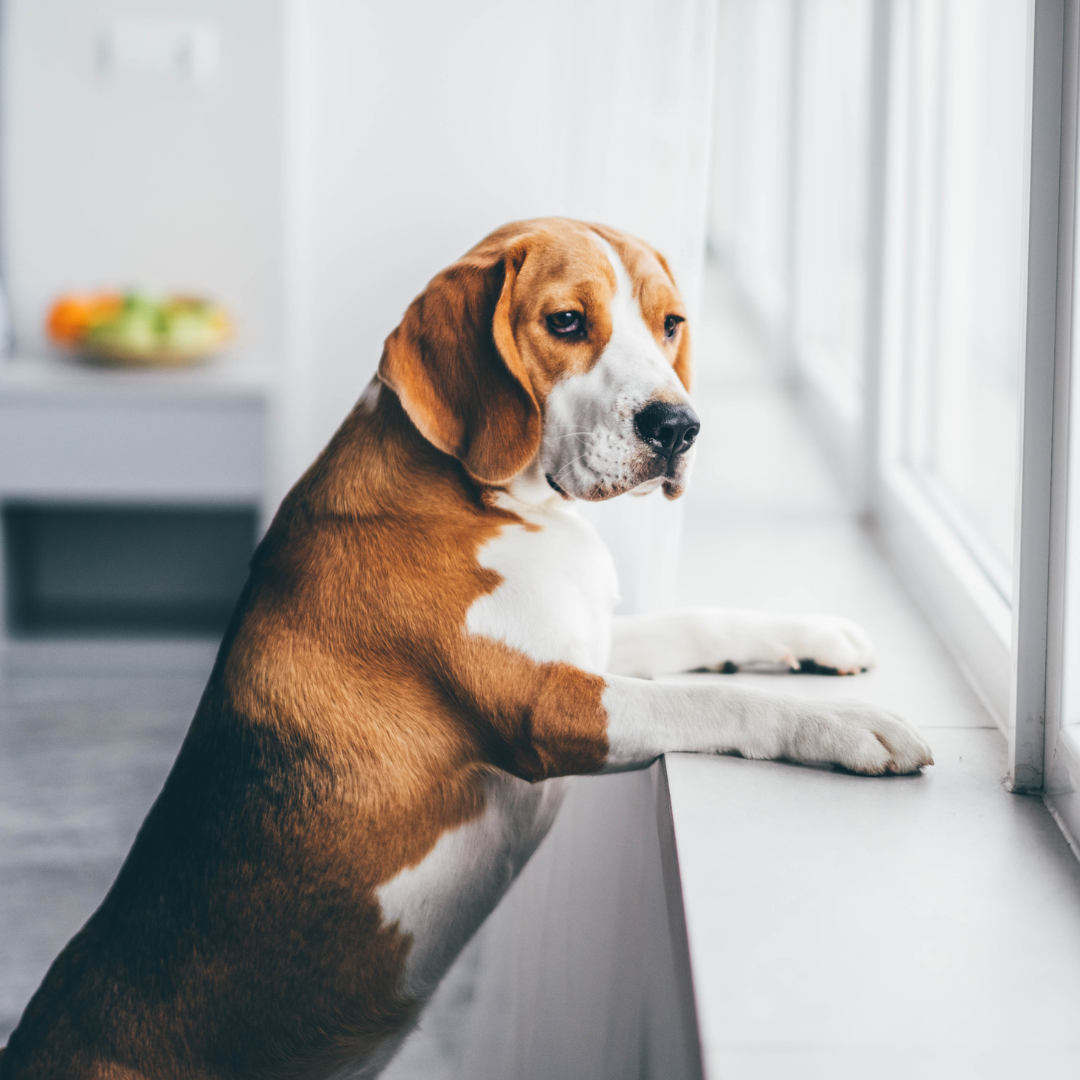
What is Separation Anxiety In Dogs?
Separation anxiety in dogs is a behavioural disorder that occurs when a dog becomes anxious or distressed when separated from their owner or left alone.
Dogs with separation anxiety may exhibit various behaviours, including destructive behaviour, excessive barking or howling, panting and pacing, and clingy behaviour.
These behaviours can occur when the owner is getting ready to leave when the owner is out of sight, or when the dog is left alone for extended periods.
Separation anxiety can be challenging and cause significant stress and concern for the dog and the owner. The underlying causes of separation anxiety are not fully understood, but genetics, early life experiences, and changes in routine or environment can all play a role.
Treatment for separation anxiety typically involves a combination of management strategies, behaviour modification techniques, and in some cases, medication. Owners of dogs with separation anxiety are encouraged to seek the advice of a veterinarian or professional dog trainer to determine the best course of action for their dog's specific needs.

Signs Of Separation Anxiety In Dogs
Separation anxiety in dogs is a behavioural problem when dogs become anxious or distressed when separated from their owners. It can be challenging for the dog and the owner, leading to destructive behaviour, excessive barking, and even self-harm. Here are some signs of separation anxiety in dogs:
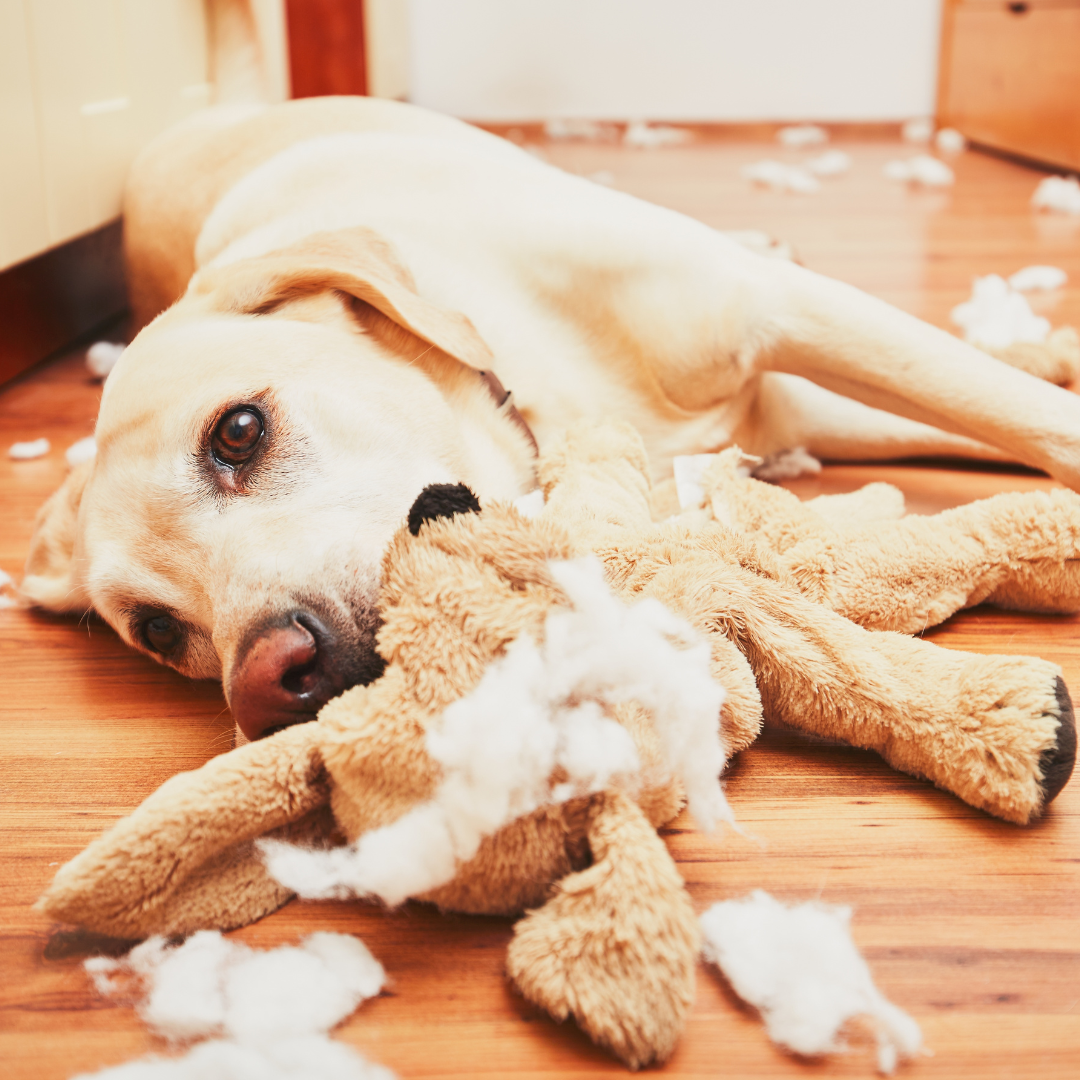
1. Destructive Behaviour
Destructive behaviour is a common sign of separation anxiety in dogs and is often one of the first signs owners notice. When left alone, dogs with separation anxiety may engage in destructive behaviours to cope with their anxiety and stress. Some of the destructive behaviours that dogs with separation anxiety may engage in include:
- Chewing: Dogs may chew on furniture, shoes, or other objects alone. This behaviour can signify anxiety and stress, as chewing can be a calming activity for dogs.
- Digging: Some dogs may dig at carpets or scratch doors and walls alone. This behaviour can be an attempt to escape or find their owner.
- Urinating or defecating: Dogs with separation anxiety may urinate or defecate in the house, even if they are house-trained. This behaviour is a sign of stress and anxiety and can frustrate owners.
- Scratching: Dogs may scratch doors, windows, or walls alone. This behaviour can be an attempt to escape or signal distress.
It's important to note that some of these behaviours can also be caused by other issues, such as boredom, a lack of exercise, or medical problems.
Suppose you notice destructive behaviour in your dog. In that case, it's essential to rule out any underlying issues and consult with your veterinarian or a professional dog trainer to determine if separation anxiety is the cause.
Owners can implement several management strategies to help prevent destructive behaviour in dogs with separation anxiety. These include providing plenty of exercises and mental stimulation, creating a safe and comfortable space for the dog when left alone, gradually desensitizing the dog to being alone, and using positive reinforcement training techniques to reinforce calm and relaxed behaviour.
2. Excessive Barking or Howling
Excessive barking or howling is a common sign of separation anxiety in dogs. When left alone, dogs with separation anxiety may vocalize excessively to get their owner's attention or express their distress. Some of the reasons why dogs with separation anxiety may bark or howl excessively include:
- Attention-seeking Behaviour: Dogs may bark or howl to get their owner's attention and get them back home.
- Separation Distress: Dogs with separation anxiety may experience extreme distress when left alone, which can cause them to bark or howl excessively.
- Fear and Anxiety: Some dogs may bark or howl out of fear or anxiety when left alone, as they may be scared of being alone or worried that something bad will happen.
Excessive barking or howling can be frustrating for owners, as it can disturb neighbours and make it difficult to leave the dog alone for any length of time.
Owners can try several management strategies to help prevent excessive barking or howling in dogs with separation anxiety. These include:
- Gradual Desensitization: Gradually desensitizing the dog to being alone can help reduce their anxiety and prevent excessive barking or howling.
- Counterconditioning: Using positive reinforcement training techniques to create positive associations with being alone can help reduce anxiety and prevent excessive barking or howling.
- Providing Mental Stimulation: Providing the dog with plenty of mental stimulation, such as puzzle toys and chew toys, can help keep them occupied and prevent boredom.
- Using Calming Aids: Calming aids, such as pheromone sprays or calming collars, can help reduce anxiety and prevent excessive barking or howling in some dogs.
It's important to note that other issues, such as boredom, lack of exercise, or medical problems, can also cause excessive barking or howling. Suppose you notice excessive barking or howling in your dog.
In that case, it's essential to rule out any underlying issues and consult with your veterinarian or a professional dog trainer to determine if separation anxiety is the cause.
3. Panting And Pacing
Panting and pacing are common signs of separation anxiety in dogs. When left alone, dogs with separation anxiety may become anxious and stressed, which can cause them to pant heavily and pace around the house. Some of the reasons why dogs with separation anxiety may pant and pace include:
- Anxiety and Stress: Dogs with separation anxiety may become anxious and stressed when left alone, which can cause them to pant and pace.
- Fear and Uncertainty: Some dogs may feel scared and uncertain when left alone, which can cause them to pant and pace to cope with their emotions.
- Hyperarousal: Dogs with separation anxiety may become hyperaroused when left alone, which can cause them to pant and pace to release their excess energy.
4. Clingy Behaviour
Clingy behaviour is another common sign of separation anxiety in dogs. When dogs with separation anxiety are around their owners, they may become excessively clingy and follow them around the house. They may also whine, cry, or become anxious when their owner is out of sight or preparing to leave. Some of the reasons why dogs with separation anxiety may become clingy include:
- Fear of Abandonment: Dogs with separation anxiety may fear being abandoned by their owner, which can cause them to become overly attached and clingy.
- Anxiety and Stress: Dogs with separation anxiety may become anxious and stressed when their owner is not around, which can cause them to become overly attached and clingy when their owner is present.
- Lack of Confidence: Some dogs may lack confidence and become overly dependent on their owner, which can cause them to become clingy and anxious when their owner is not around.

5. Physical Symptoms
In addition to the behavioural signs of separation anxiety, some dogs may experience physical symptoms when left alone. These symptoms can include:
- Vomiting and Diarrhea: Dogs with separation anxiety may experience digestive upset, such as vomiting and diarrhea when left alone. This can result from their stress and anxiety when separated from their owner.
- Loss of Appetite: Some dogs may lose their appetite when anxious or stressed, which can cause them to refuse food when left alone.
- Excessive Drooling: Dogs with separation anxiety may drool excessively when left alone, which can signify stress and anxiety.
- Urinary or Fecal Incontinence: In severe cases of separation anxiety, some dogs may experience urinary or fecal incontinence when left alone. This can result from the extreme stress and anxiety they feel when separated from their owner.
It's important to note that these physical symptoms can also be caused by other issues, such as illness or dietary issues, so it's essential to consult your veterinarian to rule out any underlying medical conditions.
If separation anxiety is determined to cause these physical symptoms, owners can try several management strategies to help reduce their dog's stress and anxiety.
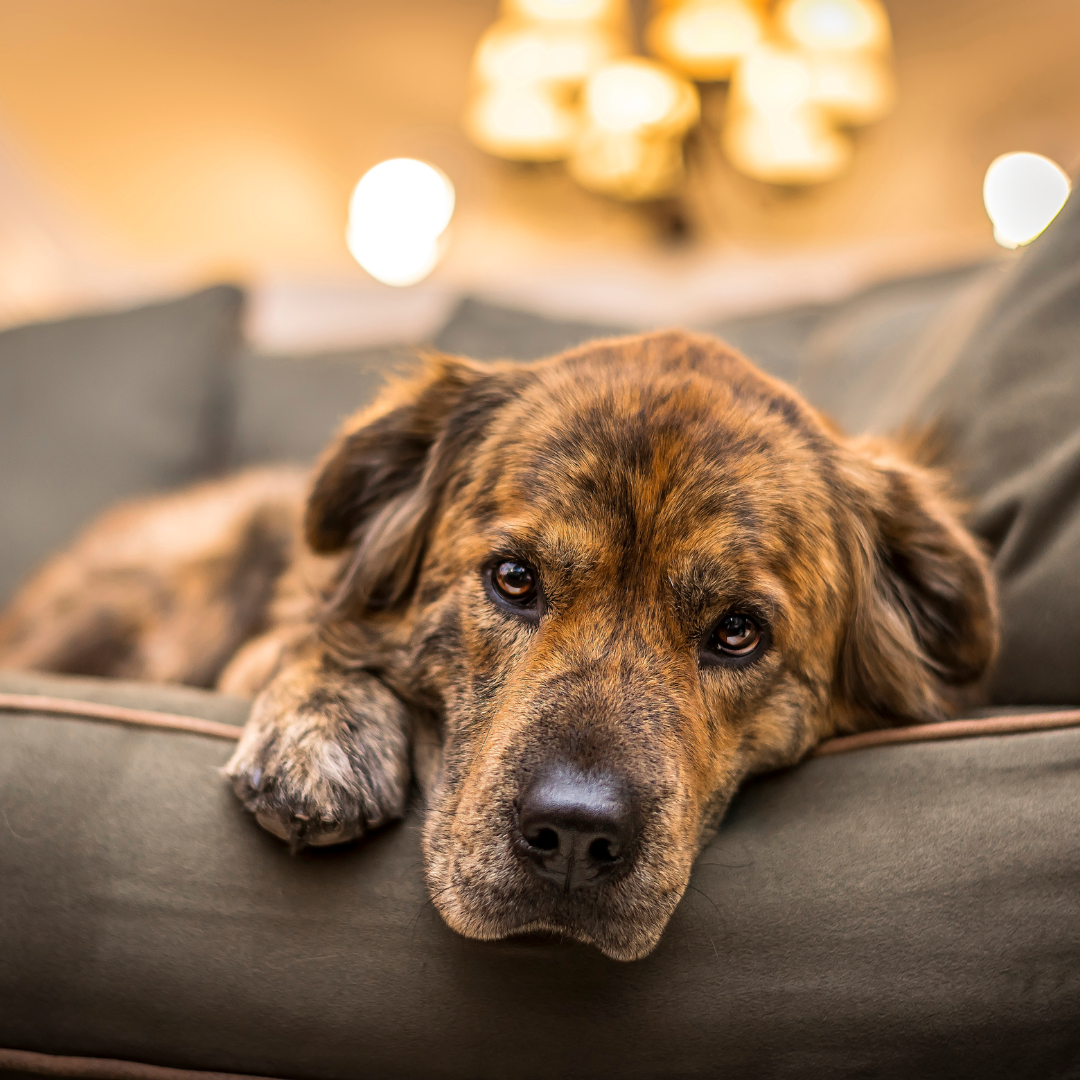
Methods for Reducing Separation Anxiety in Dogs
There are several ways to manage separation anxiety in dogs, including:
1. Gradual Desensitization
Gradual desensitization is a common technique to help dogs with separation anxiety become more comfortable with being alone.
This technique involves gradually exposing your dog to being left alone for short periods in a safe and controlled environment and progressively increasing the separation duration over time.
To begin the gradual desensitization process, start by leaving your dog alone for a very short period, such as 5-10 minutes, and gradually increase the duration of separation over several weeks or months.
During these periods of separation, ensure your dog is in a safe and secure environment, such as a crate or a specific room. Provide your dog with toys or other mental stimulation to keep them occupied and help reduce their anxiety.
It's important to note that you should never leave your dog alone for longer than they can handle, as this can cause them to become more anxious and exacerbate their separation anxiety.
It's also important to stay calm and relaxed when leaving and returning home, as your dog can pick up on your emotions and become more anxious if you are anxious or stressed.
Gradual desensitization can be a very effective technique for managing separation anxiety in dogs, but it's important to remember that every dog is different and may require a different approach.
Consulting with a veterinarian or professional dog trainer specializing in behaviour modification techniques can help you develop a tailored plan to manage your dog's separation anxiety.
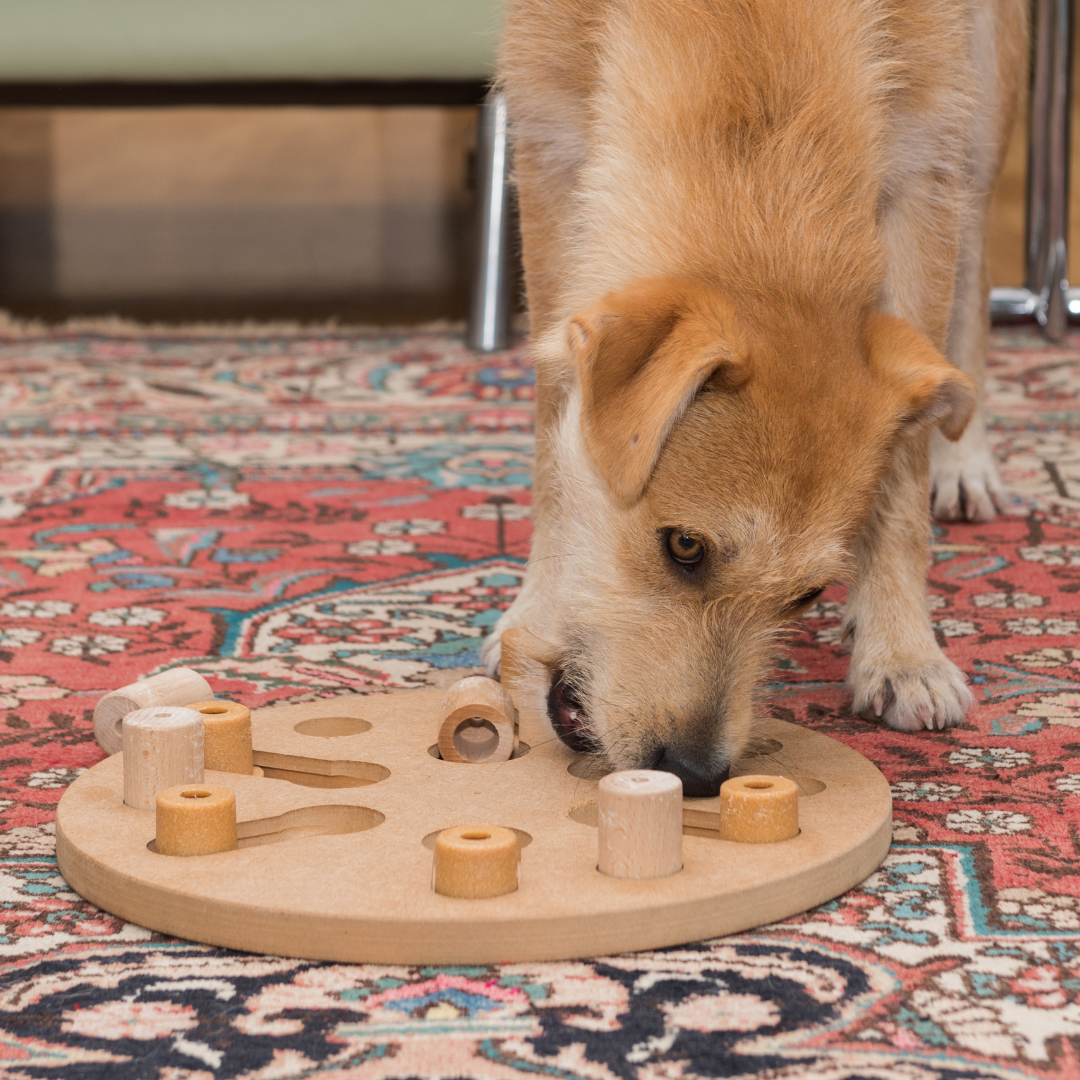
2. Providing Mental Stimulation
Providing mental stimulation through interactive, puzzle, or chew toys is an effective way to keep dogs occupied and help reduce their anxiety when left alone. These toys can provide mental stimulation and help distract your dog from its anxiety.
Interactive toys, such as treat-dispensing or toys that require your dog to solve a puzzle, can keep your dog mentally engaged and provide a positive distraction.
These toys can be filled with treats or food, which can help keep your dog occupied for longer periods. Some interactive toys can even be programmed to dispense treats at timed intervals, which can help your dog associate being alone with positive experiences.
Chew toys, such as bones or durable toys made specifically for chewing, can also help reduce anxiety in dogs. Chewing can help reduce stress and anxiety in dogs and provide a positive outlet for your dog's natural urge to chew.
It's important to note that not all toys are created equal, and choosing toys that are safe and appropriate for your dog's size and age is important. Additionally, it's important to supervise your dog when playing with toys to ensure their safety.
Providing mental stimulation through interactive toys, puzzle toys, or chew toys can be a great way to help manage separation anxiety in dogs. Still, it's important to remember that these toys should not be relied upon as the sole solution.
Gradual desensitization and other behaviour modification techniques should also be used to provide mental stimulation.
3. Calming Aids
Calming aids can help reduce anxiety in dogs and can be an effective addition to behaviour modification techniques like gradual desensitization. There are various types of calming aids available that can help soothe an anxious dog.
Pheromone sprays, collars, or diffusers: Pheromone products are designed to mimic the calming scents a mother dog produces to calm her puppies.
These products release a synthetic version of these scents, which can help to soothe an anxious dog. They can be purchased in various forms, such as sprays, collars, or diffusers, and can be used in your dog's environment to help promote a calming effect.
Natural remedies: Some natural remedies, such as chamomile or valerian root, have calming effects on dogs and can help reduce anxiety. These remedies can be administered in various forms, such as herbal supplements or drops, and can help to promote a sense of calm in your dog.
It's important to note that while calming aids can be helpful, they should not be relied upon as the sole solution for separation anxiety. These products should be used in conjunction with other behaviour modification techniques and under the guidance of a veterinarian.
In addition to these calming aids, providing a calm and structured environment for your dog is also important. Keeping a consistent routine, avoiding sudden changes, and creating a safe and secure space for your dog can all help to reduce anxiety and promote relaxation in your furry friend.
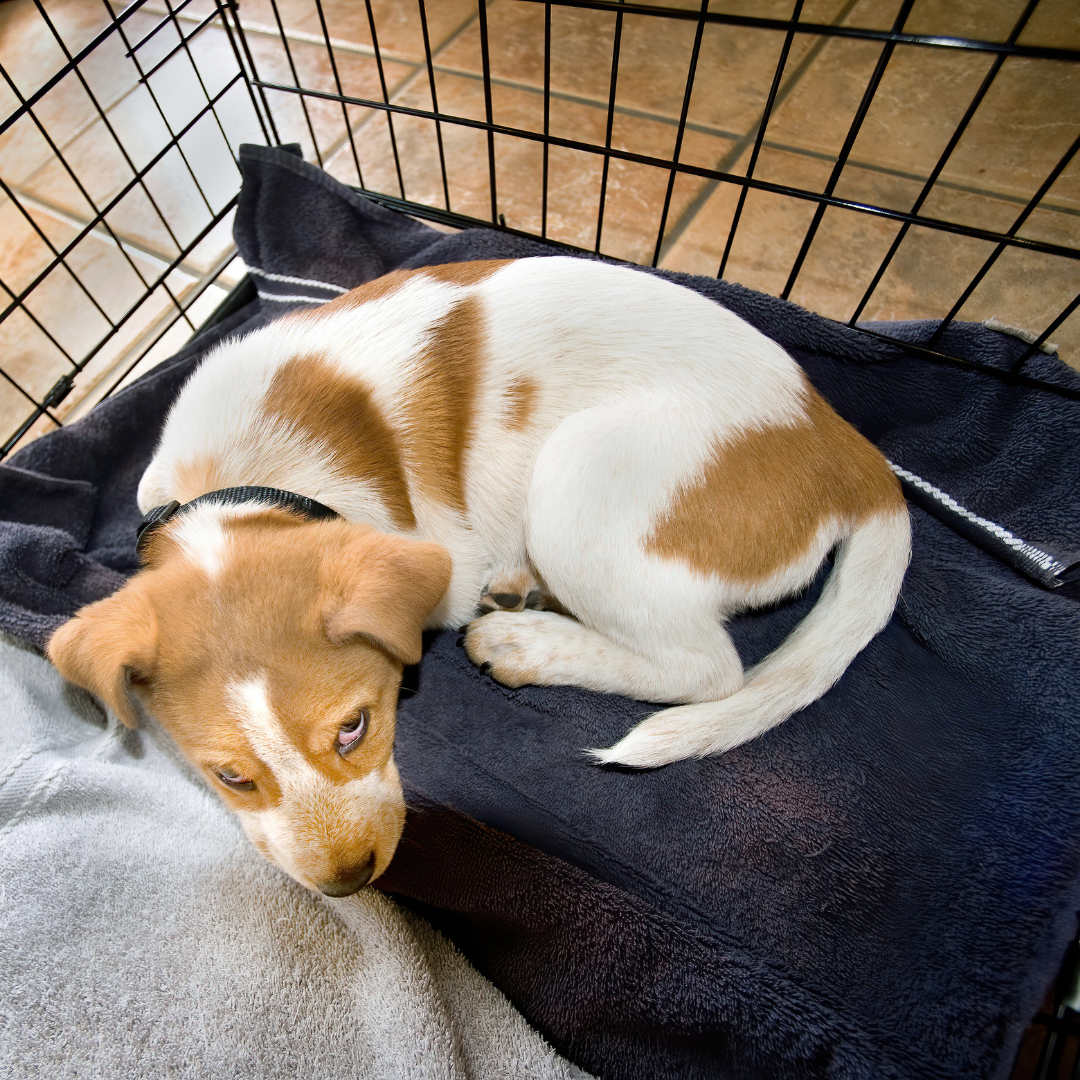
4. Creating A Safe Space
Creating a safe and comfortable space for your dog can be an effective way to help them feel secure when left alone and reduce their anxiety. This can be done by providing your dog with a crate or a specific room designated as their own safe space.
A crate can be a great option for dogs already crate-trained, as it provides a familiar and secure environment for your dog. When using a crate as a safe space, it's important to ensure it is the appropriate size for your dog and is comfortable and well-ventilated.
You can also make the crate more inviting by adding a soft bed or blanket and providing your dog with toys and treats to keep them occupied.
If your dog is not crate-trained, you can create a safe space in a specific room of your home. This can be a spare bedroom or an area designated as your dog's own space. You can add a comfortable bed or blanket, as well as toys and treats, to make the space inviting and comfortable for your dog.
When creating a safe space for your dog, it's important to ensure they can access food, water, and a place to go potty if necessary.
Additionally, it's important to gradually introduce your dog to their safe space and ensure they positively associate with the area. Over time, your dog may begin to see their safe space as a place of comfort and security, which can help reduce separation anxiety.
5. Professional Help
If your dog's separation anxiety is severe or persists despite your best efforts, seeking the advice of a veterinarian or professional dog trainer specializing in behaviour modification techniques may be necessary.
A veterinarian can help rule out any underlying medical conditions contributing to your dog's anxiety and prescribe medications to help reduce anxiety and stress.
A professional dog trainer can help you develop a tailored plan to manage your dog's separation anxiety. This plan may involve combining techniques, such as gradual desensitization, providing mental stimulation, creating a safe space, and using calming aids. The trainer can also help you identify any triggers or underlying causes of your dog's anxiety and develop a plan to address them.
Sometimes, a professional dog trainer may recommend more intensive behaviour modification techniques, such as counterconditioning or systematic desensitization, which involve gradually exposing your dog to its triggers in a controlled environment.
Remember that managing separation anxiety in dogs can take time and patience. It's important to be consistent with your training and to seek professional help if necessary to ensure the best outcome for your dog.
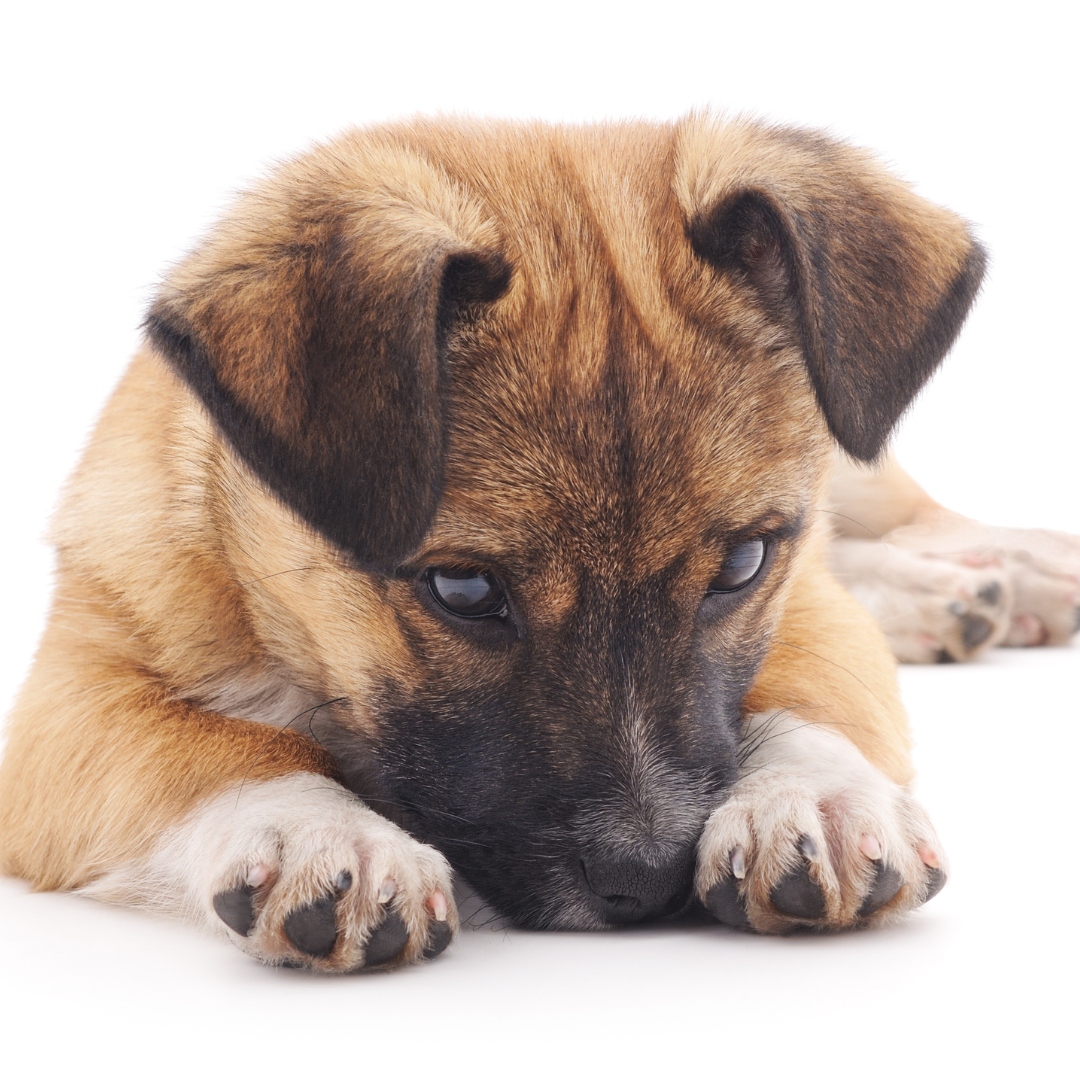
Conclusion
Separation anxiety is a common problem for many dogs, and it can cause stress and anxiety for the dog and its owner. It's important to be aware of the signs of separation anxiety in dogs, including destructive behaviour, excessive barking or howling, panting and pacing clingy behaviour, and physical symptoms like vomiting or diarrhea.
Fortunately, there are many ways to manage and reduce separation anxiety in dogs. These can include gradual desensitization, providing mental stimulation, using calming aids, creating a safe space, and seeking professional help.
Remember that every dog is different; what works for one dog may not work for another. However, patience, consistency, and the right approach can help your dog feel more comfortable and secure when left alone and reduce separation anxiety's impact on your dog and your household.
I trust you enjoyed this article on Signs Of Separation Anxiety In Dogs. Please stay tuned for more blog posts to come shortly. Take care!
JeannetteZ
>>>Please click here to read my article on A Full Overview Of Dogs And Their Activity<<<
My #1 Dog Training Recommendation
Your Opinion Is Important To Me
Thoughts? Ideas? Questions? I would love to hear from you. Please leave me your questions, experience, and remarks about this article on Signs Of Separation Anxiety In Dogs in the comments section below. You can also reach me by email at Jeannette@Close-To-Nature.org.
Disclosure
This post may contain affiliate links. I earn from qualifying purchases as an Amazon Associate and other affiliate programs. Please read my full affiliate disclosure.
You might also enjoy these blog posts:
Dog Tail Language – What Your Dog’s Tail Can Tell?

